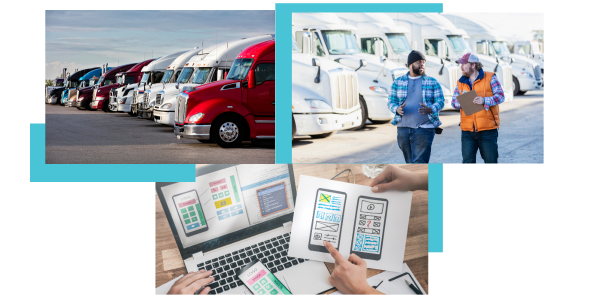
For transportation and logistics companies, the website often serves as the first port of call for potential clients exploring your services. In today's digital-first world, an outdated website isn't just a minor hitch—it can significantly deter prospective business. Here's how a well-thought-out website redesign can steer your company toward increased growth and client engagement.
In the logistics industry, your website is the primary platform where customers first interact with your brand. A redesigned website needs to immediately communicate your company’s strengths and core services, much like FedEx’s homepage, which showcases their tracking services and logistical capabilities prominently. Your homepage should be designed to provide all the necessary information in a clear, engaging manner.
Improving user experience (UX) is crucial. A streamlined, intuitive website layout can significantly enhance how customers interact with your site. For instance, incorporating features like quick access to tracking or scheduling pickups, as seen on major logistics websites, can make a substantial difference. Ensure that the site is mobile-responsive to accommodate users on various devices, enhancing accessibility and user satisfaction.
SEO improvements are a vital part of any website redesign. Optimizing your website with relevant keywords, such as "efficient freight solutions" or "reliable shipping services," ensures that potential clients can easily find your site through search engines. This strategy not only improves visibility but also attracts a targeted audience that is more likely to engage with your content and services.
Analyzing what competitors are doing can provide valuable insights. If a competitor’s site highlights their cutting-edge technology, consider showcasing your own technological advancements or operational efficiencies in your redesign. Highlighting unique aspects of your service, like special handling capabilities or global reach, can also help differentiate your brand in a crowded market.
Use analytics to understand user behavior on your current website. Insights from data can guide your redesign efforts, ensuring that changes are informed by actual user preferences and behaviors. For example, if data shows that users frequently engage with FAQs or customer testimonials, these elements can be made more prominent in the new design to enhance user trust and engagement.
Revamping your content strategy is crucial. Your website should include well-crafted, informative content that addresses common customer questions and showcases your expertise. Regular updates with industry news, case studies, and operational insights can keep your content fresh and engaging, which helps in improving SEO and keeping your audience informed.
In conclusion, a strategic website redesign for transportation and logistics companies goes beyond aesthetics—it's about making your online presence as efficient and user-friendly as your services. By focusing on user experience, search engine optimization, competitive analysis, data-driven design, and a robust content strategy, your redesigned website will serve not just as a business card but as a dynamic tool that drives growth and attracts new clients.